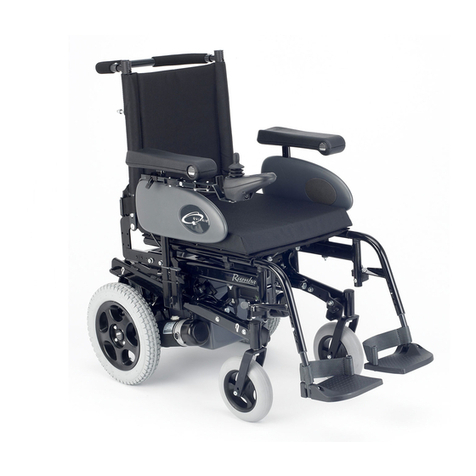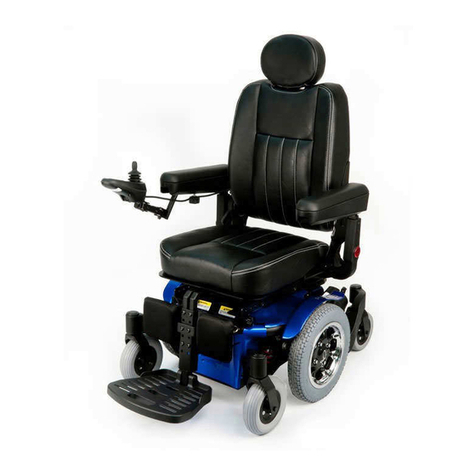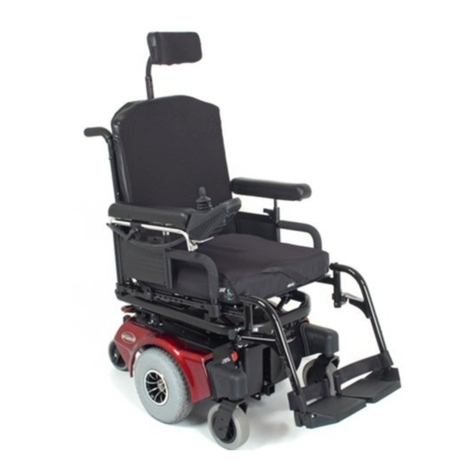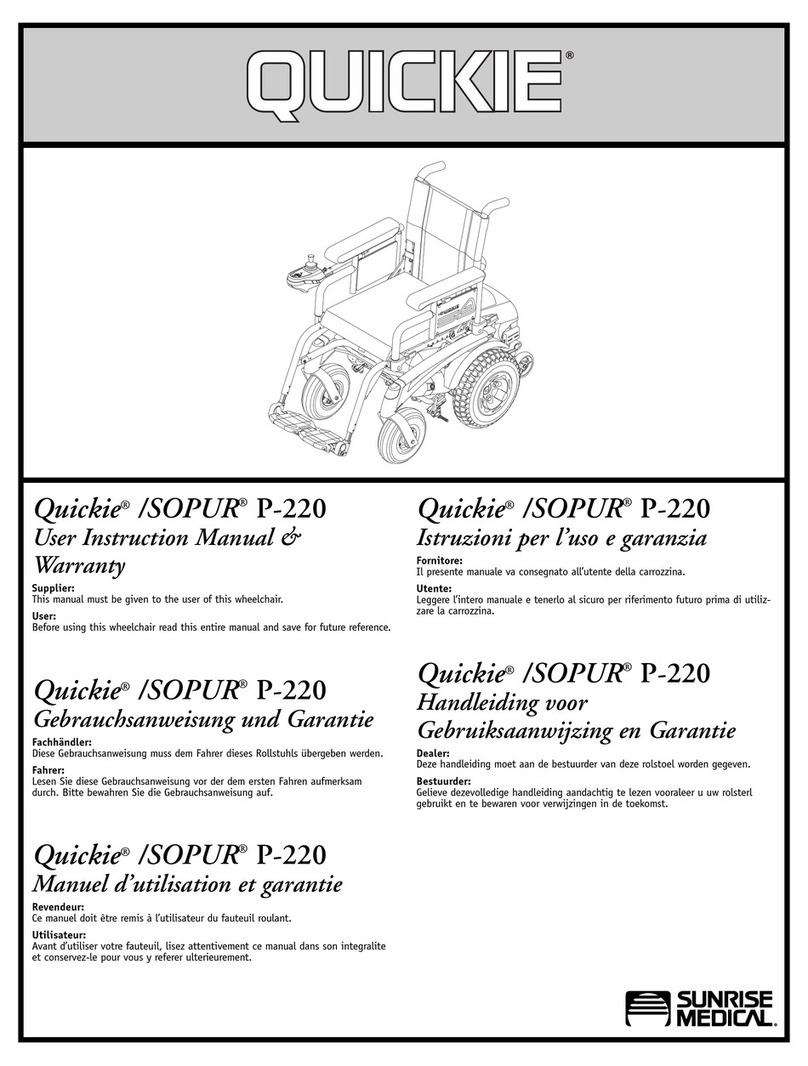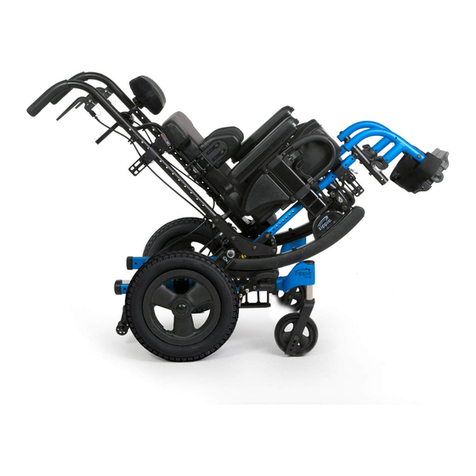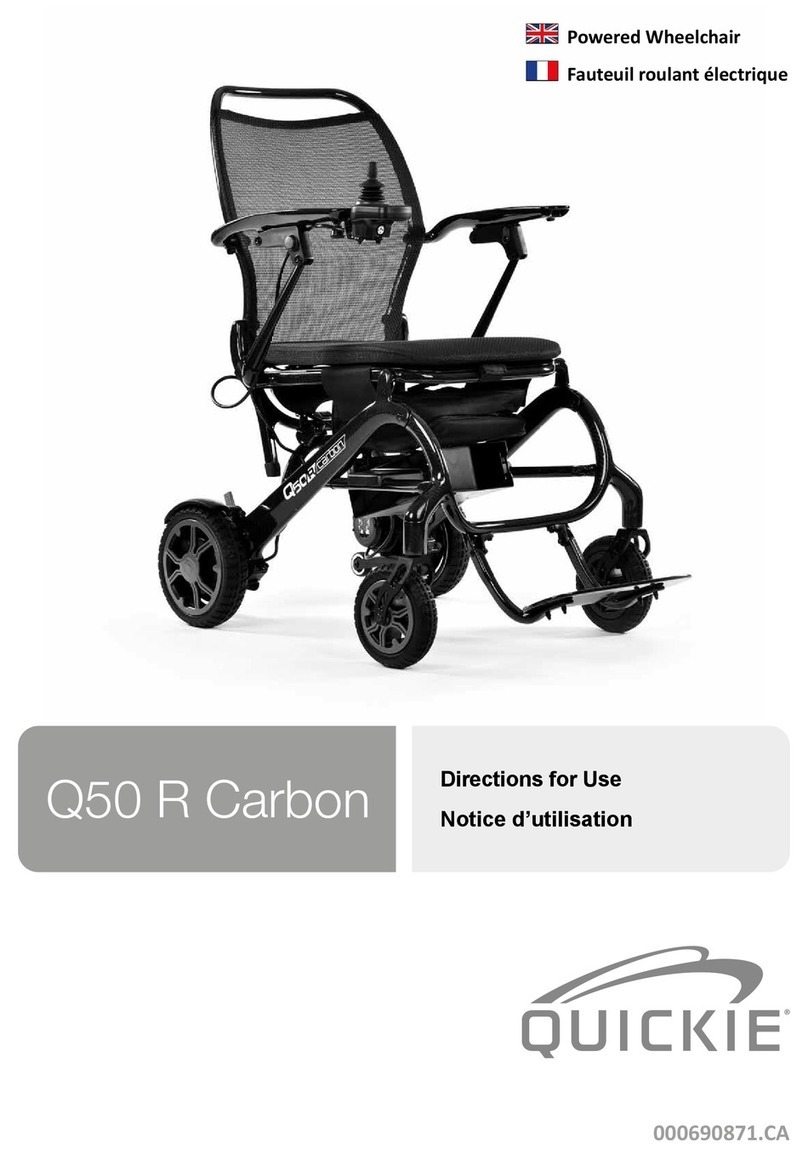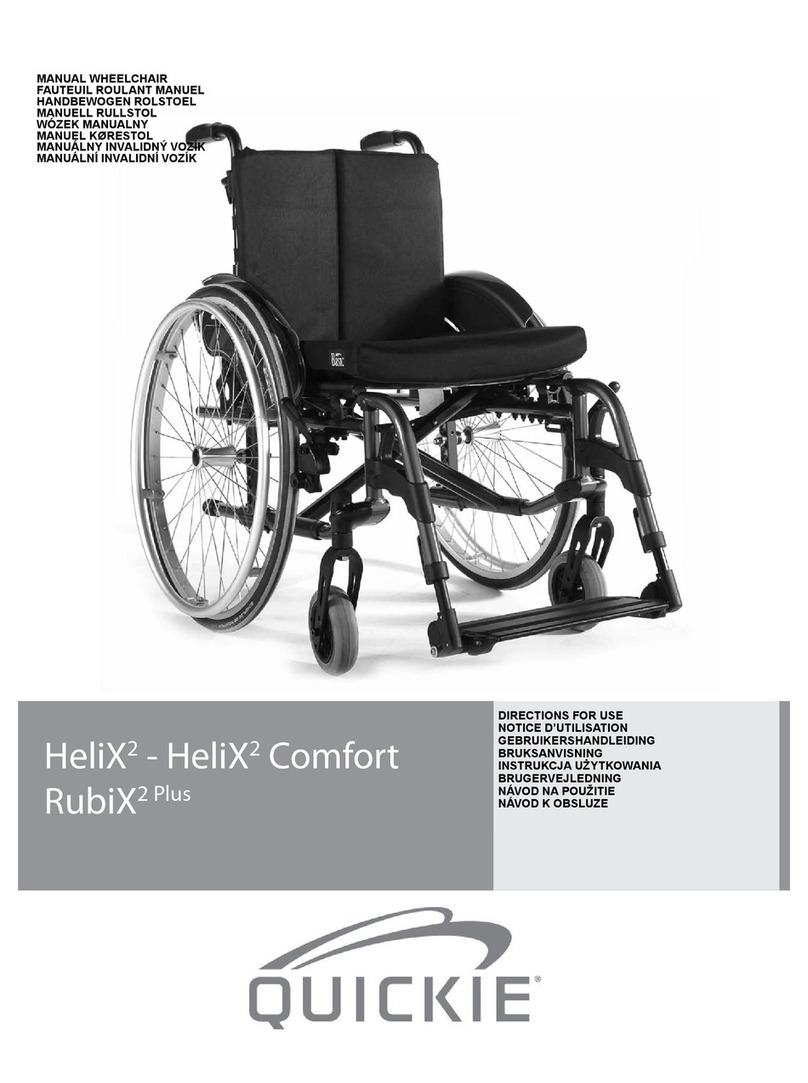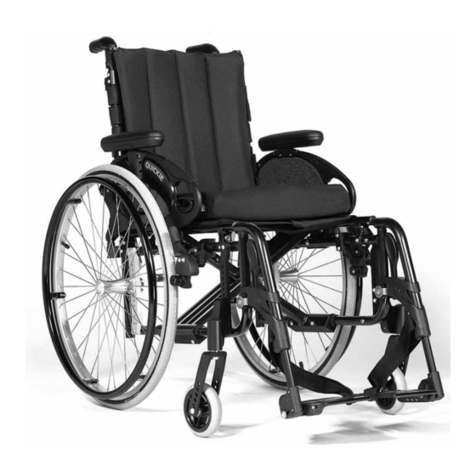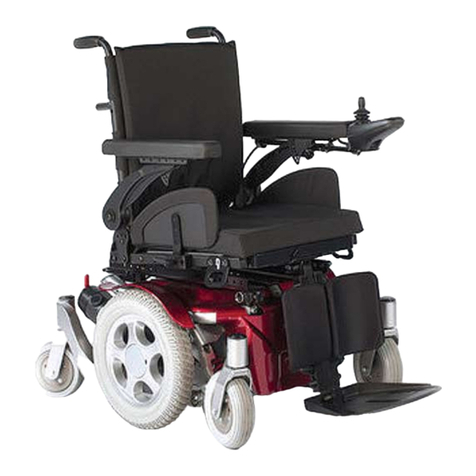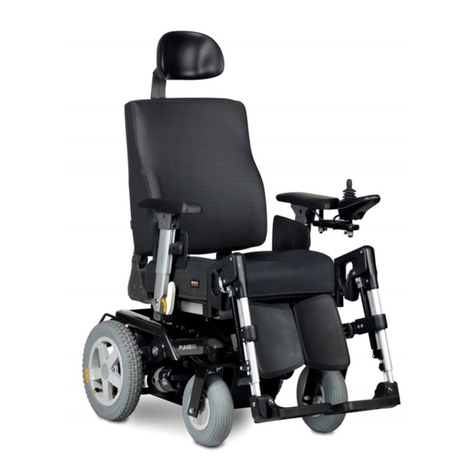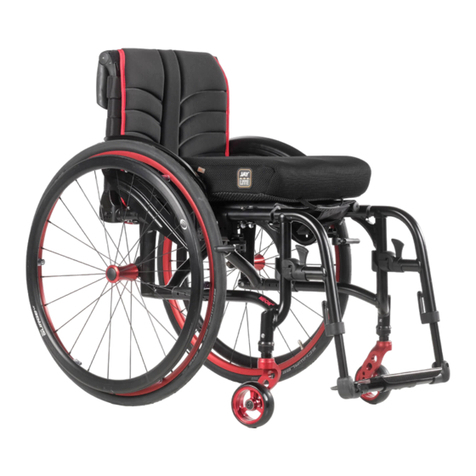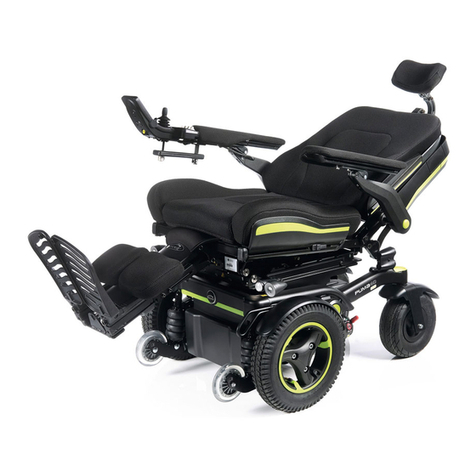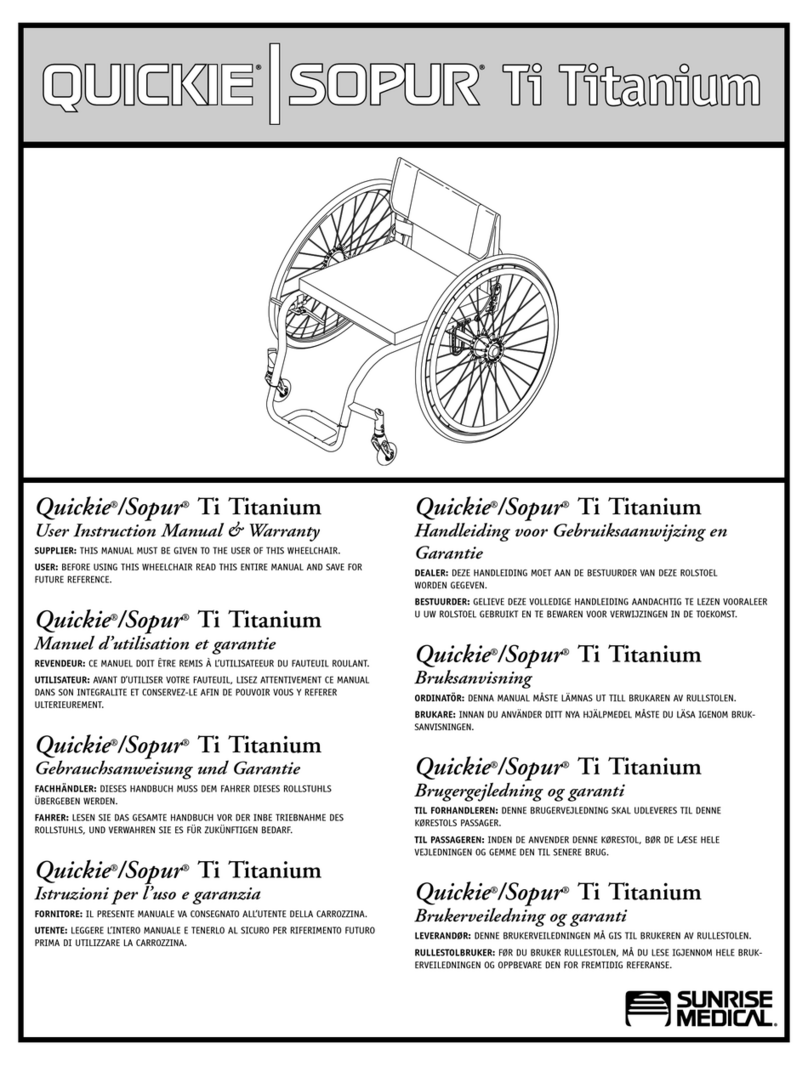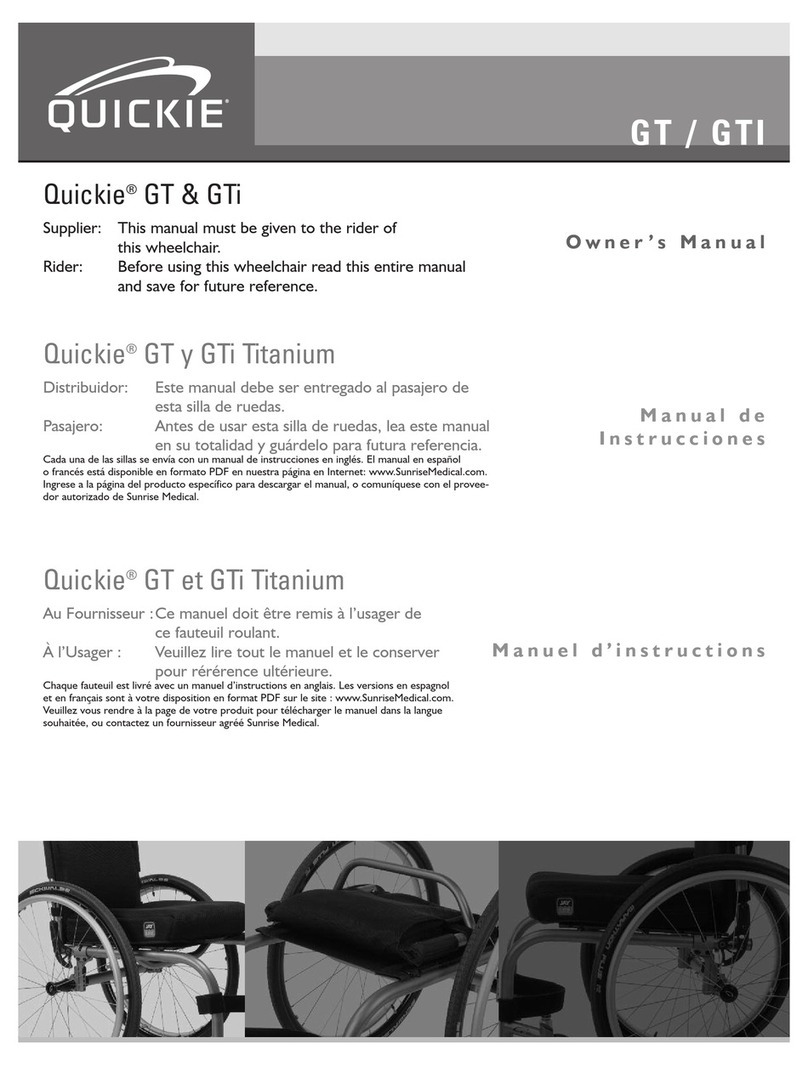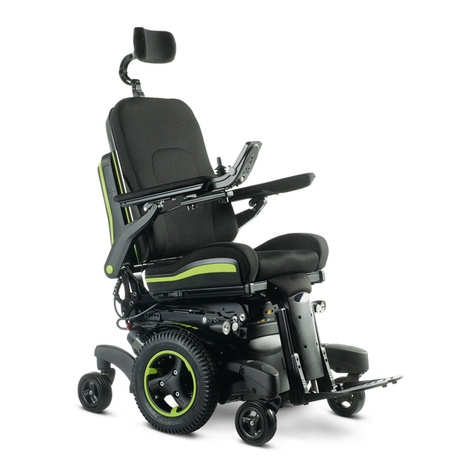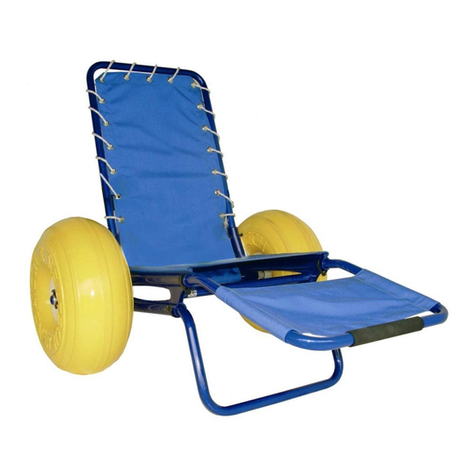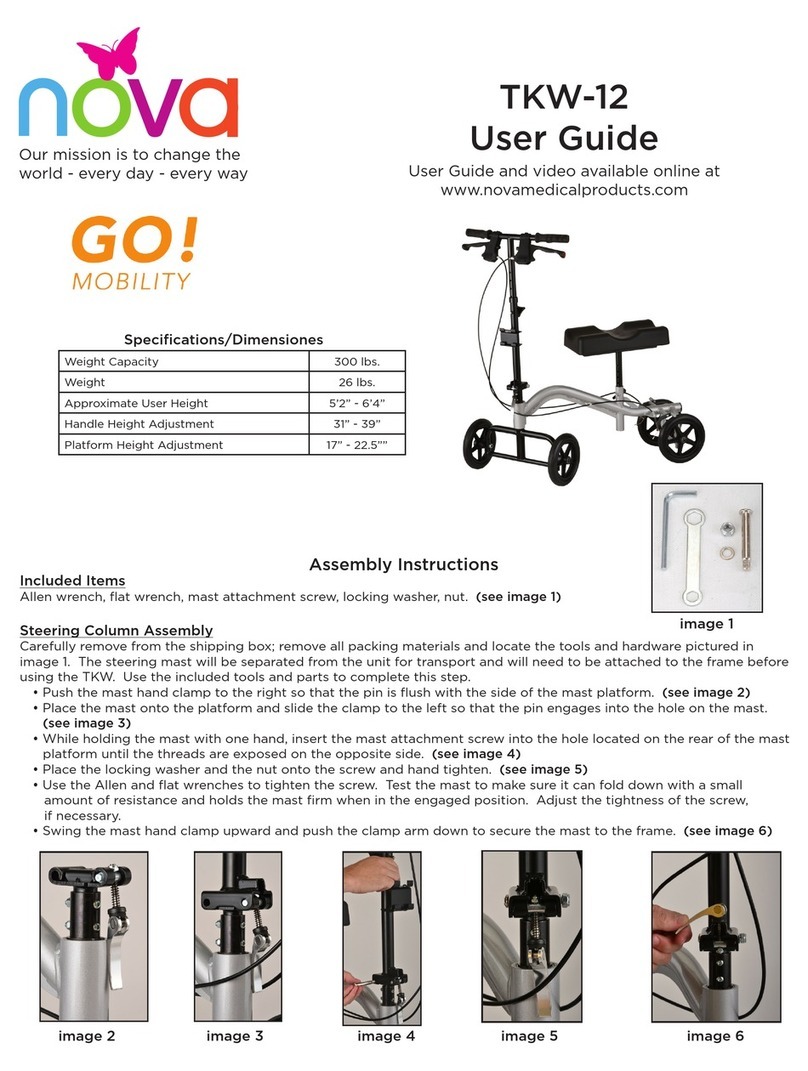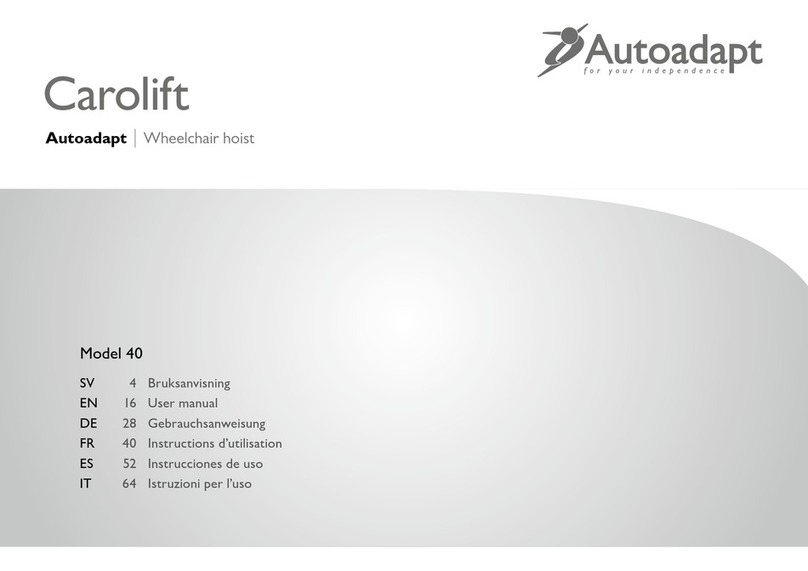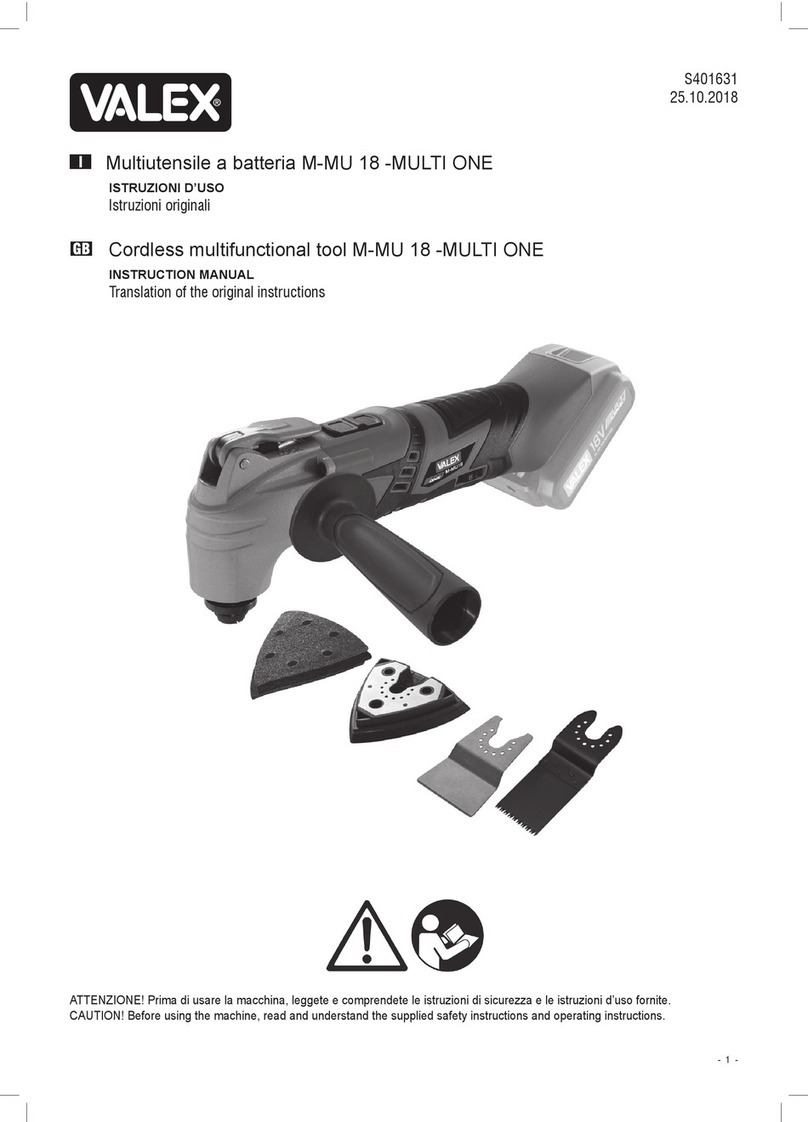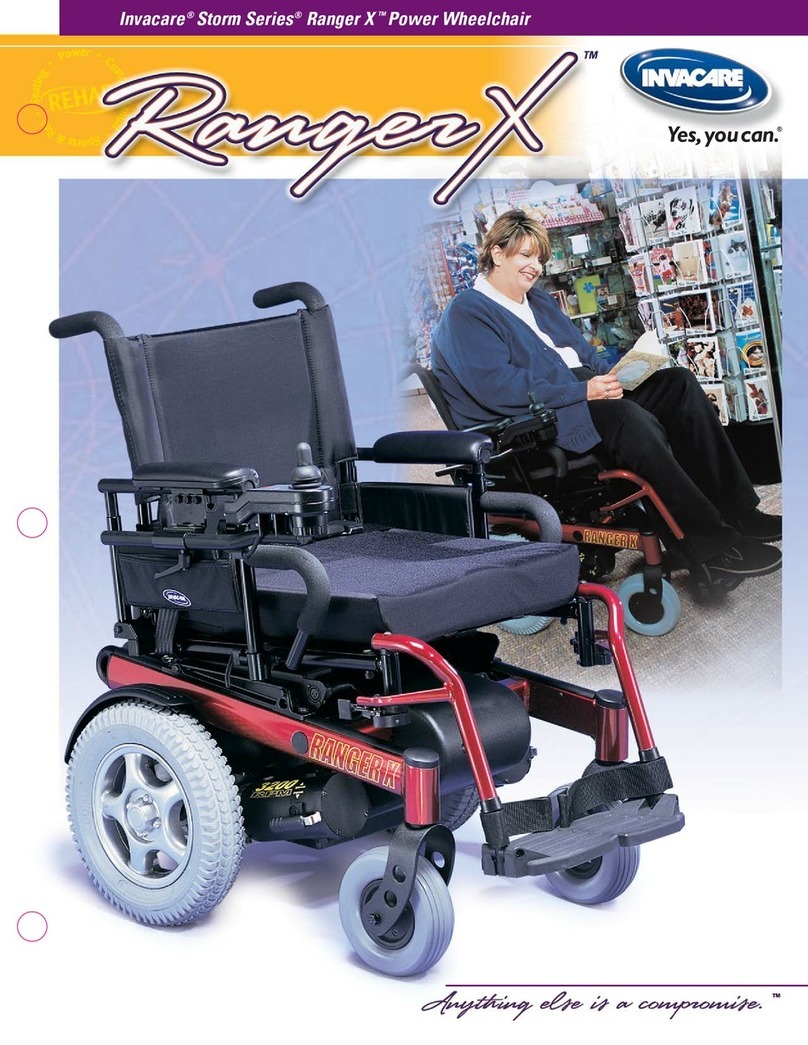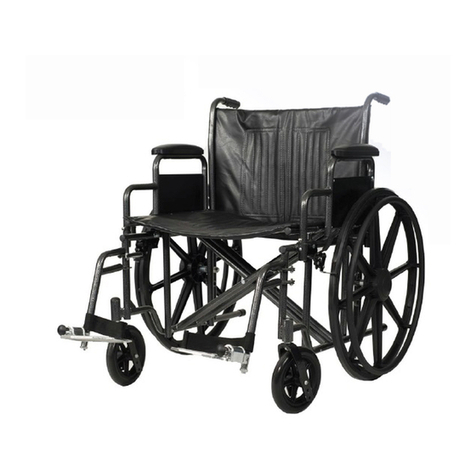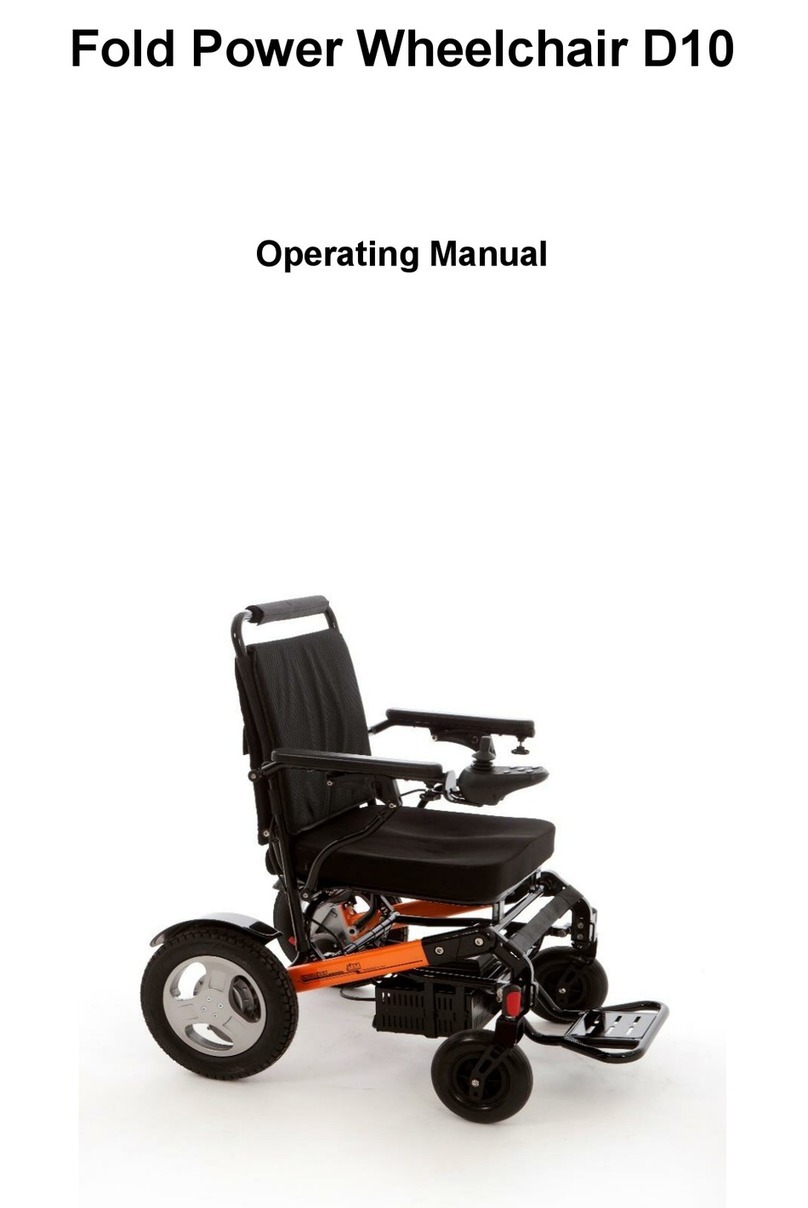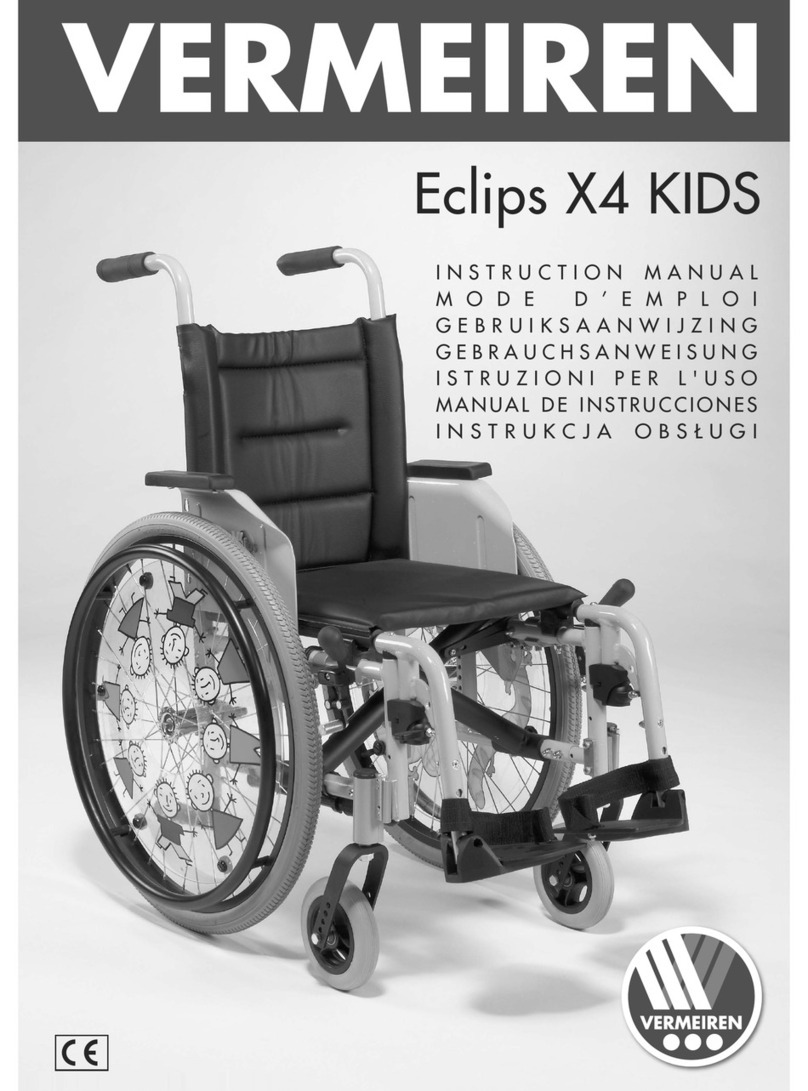
ENGLISH
XENON 2 FF 10 Rev.2.0
1.0 General safety notes and driving restrictions
The engineering and construction of this wheelchair has
been designed to provide maximum safety. International
safety standards currently in force have either been fulfilled
or exceeded in parts. Nevertheless, users may put
themselves at risk by improperly using their wheelchairs. For
your own safety, the following rules must be strictly
observed.
Unprofessional or erroneous changes or adjustments
increase the risk of accident. As a wheelchair user, you are
also part of the daily traffic on streets and pavements, just
like anyone else. We would like to remind you that you are
therefore also subject to any and all traffic laws.
Be careful during your first ride in this wheelchair. Get to
know your wheelchair.
Before each use, the following should be checked:
• Quick-release axles on the rear wheels
• Velcro on seats and backrests
• Tyres, tyre pressure and wheel locks.
Before changing any of the adjustments of this
wheelchair, it is important to read the corresponding
section of the user’s manual.
It is possible that potholes or uneven ground could
cause this wheelchair to tip over, especially when riding
uphill or downhill. When riding over a step or up an incline
frontally, the body should be leaning forward.
Danger!
• NEVER exceed the maximum load of 110kg or 140kg
(depending on frame version), for driver plus any items
carried on the wheelchair. Please note the weight
information for lighter weight options, which are quoted
separately. If you exceed the maximum load, this can lead
to damage to the chair, or you may fall or tip over, lose
control and may lead to serious injury of the user and other
people.
• If and whenever possible, during a journey in a specially
fitted vehicle for disabled people, vehicle occupants
should use the seats in the vehicle and the appropriate
restraint system. This is the only way to ensure that
occupants will have the maximum protection if there
is an accident. When using safety elements offered by
SUNRISE MEDICAL and using a specially designed safety
system, lightweight wheelchairs can be used as a seat
when being transported in a specially fitted vehicle. (See
the Chapter on “Transportation”).
• To avoid falls and dangerous situations, you should first
practice using your new wheelchair on level ground with
good visibility.
• This wheelchair should be used exclusively to convey one
person at a time. Any other use does not comply with the
intended purpose.
• When getting on or off the wheelchair, do not use the
footboards. These should be flipped up beforehand and
swung to the outside as far as possible.
• Depending on the diameter and setting of the castors, as
well as the centre of gravity setting of the wheelchair, the
castors may begin to wobble at high speeds. This can lead
to the castors being blocked and the wheelchair may tip
over. Therefore, please make sure that the castors are
adjusted correctly (see the Chapter "Castors").
• In particular, do not travel on an incline without wheel
locks, travel at a reduced speed. This product has been
tested to a maximum speed of 10kph. At higher speeds,
depending on the configuration and/or physique/physical
capabilities of the user, there may be unexpected castor
wobble. This can lead to injury of the user.
• Riding sideways on to a slope or incline, increases the
possibility of the wheelchair tipping over sideways.
• Explore the effects of changing the centre of gravity on
the behaviour of the wheelchair, for example on inclines,
slopes, all gradients or when overcoming obstacles. Do
this with the secure aid of a helper.
• We recommend that novice users use anti-tip tubes.
• Anti-tip tubes should prevent the chair tipping over
backwards unintentionally. Under no circumstances
should they take the place of transit wheels, and be used
to transport a person in a wheelchair with the rear wheels
removed.
Fig. A

